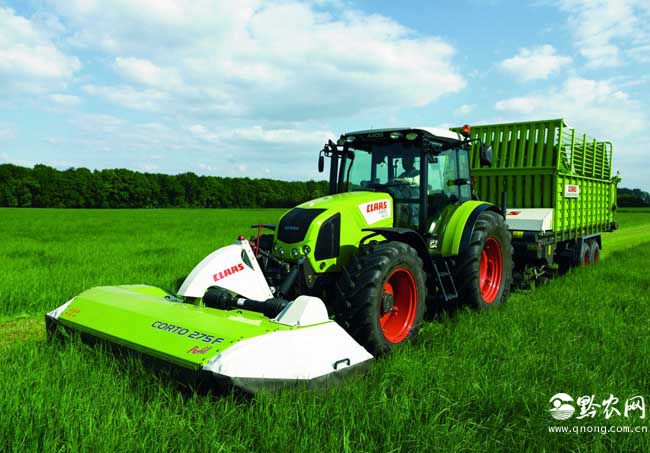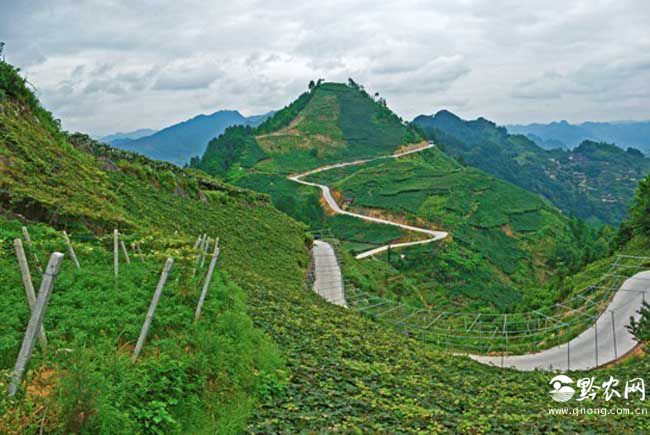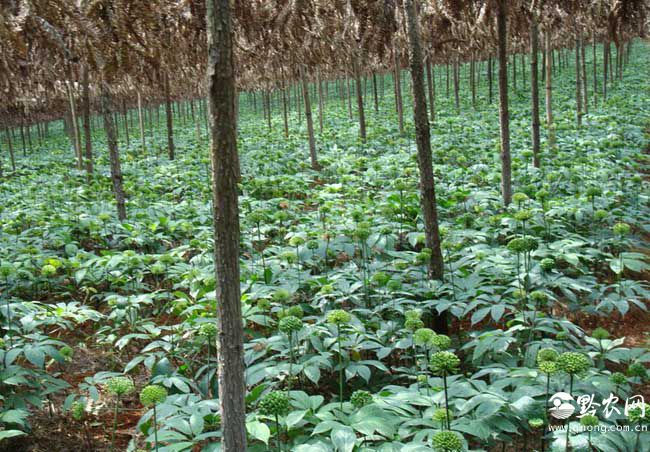The Construction significance of Modern Agriculture

Modern agriculture defines socialized agriculture with extensive application of modern science and technology, means of production provided by modern industry and scientific management methods. In the history of agricultural development divided according to the nature and situation of agricultural productive forces, it is the latest development stage of agriculture, which mainly refers to the agriculture of economically developed countries and regions after the second World War.
The main characteristics of modern agriculture
1. It has higher comprehensive productivity, including higher land output rate and labor productivity. Agriculture has become an industry with high economic benefits and market competitiveness, which is the most important symbol to measure the development level of modern agriculture.
2. Agriculture has become a sustainable development industry. Agricultural development itself is sustainable and has a good regional ecological environment. Extensive use of ecological agriculture, organic agriculture, green agriculture and other production technologies and production models to achieve the sustainable use of fresh water, land and other agricultural resources, to achieve a virtuous circle of regional ecology, agriculture itself has become a good recyclable ecosystem.
3. Agriculture has become a highly commercialized industry. Agriculture is mainly produced for the market, has a high commodity rate, and allocates resources through the market mechanism. Commercialization is based on the market system, and modern agriculture requires the establishment of a very perfect market system, including the modern circulation system of agricultural products. Without a developed market system, there can be no real modern agriculture. In countries with a high level of agricultural modernization, the commodity rate of agricultural products is generally more than 90%, and the commodity rate of some industries can reach 100%.
4. Realize the modernization of the material conditions of agricultural production. On the basis of relatively perfect production conditions, infrastructure and modern material equipment, various modern production input factors are used intensively and efficiently, including water, electricity, agricultural film, fertilizers, pesticides, improved varieties, agricultural machinery and other material inputs and agricultural labor inputs, so as to achieve the purpose of improving agricultural productivity.
5. Realize the modernization of agricultural science and technology. Advanced and applicable agricultural science and technology, biotechnology and production models are widely adopted to improve the quality of agricultural products and reduce production costs, so as to adapt to the development trend of market demand for high quality, diversification and standardization of agricultural products. The development process of modern agriculture is essentially a process of extensive application of advanced science and technology in the field of agriculture and a process of transforming traditional agriculture with modern science and technology.
6. Realize the modernization of management mode. The advanced mode of operation, management technology and management means are widely used to form a relatively complete industrial chain of close connection and organic connection from the prenatal, mid-and post-natal stages of agricultural production, with a high degree of organization. There are relatively stable and efficient channels for the sale and processing of agricultural products, an organizational system that efficiently organizes scattered farmers, and an efficient modern agricultural management system.
7. Realize the modernization of farmers' quality. Having high-quality agricultural management personnel and labor force is not only a prerequisite for the construction of modern agriculture, but also a prominent feature of modern agriculture.
8. Realize the scale, specialization and regionalization of production. By realizing the scale, specialization and regionalization of agricultural production and management, reducing public and external costs, and improving the efficiency and competitiveness of agriculture.
9. To establish a government macro-control mechanism compatible with modern agriculture. Establish a sound agricultural support and protection system, including legal system and policy system.
The Construction significance of Modern Agriculture
Speeding up the pace of modern agricultural construction is conducive to liberating and developing rural productive forces, improving the comprehensive production capacity and efficiency of agriculture, promoting all-round economic and social development in rural areas, introducing industrial and technological achievements, and improving the quality of agricultural development. enhance exchanges and interaction between urban and rural areas, workers and farmers, and realize the coordinated development of urban and rural areas It is conducive to the rational use of resources, protect and improve the ecological environment, enhance the ability of sustainable development of agriculture, and promote the harmonious coexistence of human and nature. The modern agricultural planning experts of the Vision Design and Research Institute specifically talked about the following aspects:
1. The concrete embodiment of development: the development of modern agriculture is the concrete application and implementation of the scientific concept of development in agricultural and rural work. Through the construction of modern agriculture, promote the transformation of agricultural growth mode, optimize the agricultural and rural economic structure, intensive use of agricultural resources, improve agricultural competitiveness, and achieve sound and rapid development of agriculture. Vigorously develop modern agriculture, strive to change the mode of agricultural growth, optimize the industrial structure and layout, intensively and economically use natural resources and factors of production, protect the ecological environment, and truly bring agricultural and rural development into the track of scientific development.
2. The primary task of the new countryside is to speed up the construction of modern agriculture, promote the development of production, increase farmers' income, improve the ecological environment, and lay a solid industrial foundation for the construction of a new countryside. Speed up the transformation of traditional agriculture, promote social service in rural areas, broaden farmers' employment channels, increase farmers' income, promote the development of ecological agriculture, and promote the harmonious coexistence and coordinated development of man and nature. This is consistent with the goal of building a new socialist countryside.
3. The way to increase farmers' income: actively developing modern agriculture is the concrete implementation of the scientific concept of development in agriculture and rural work, the fundamental way to realize the stable development of grain and the sustainable increase of farmers' income, and the only way to realize the sustainable development of agriculture. Speed up the construction of modern agriculture, comprehensively improve the comprehensive production capacity of grain, improve the comprehensive efficiency of agriculture, and fundamentally consolidate the foundation for increasing grain income.
4. the only way to realize agriculture: agricultural development is faced with the double restriction of resources and market, the contradiction of resource shortage is becoming more and more prominent, and the pressure of market competition at home and abroad is increasing. Speed up the construction of modern agriculture, promote the progress and innovation of agricultural science and technology, vigorously develop circular agriculture and rural circular economy, further improve the efficiency of resource utilization, improve the quality and efficiency of agricultural development, and promote the sustainable development of agriculture.
Related
- A course of planting techniques and methods on how to grow carrots
- How to plant the latest tulips?
- Is it better to pick tea in the morning or in the afternoon? When is the best time for tea to be picked? what is the third or fifth tea?
- Launch Yuanxiao Happy combination Haocha + Tea Yuan healthy Taste
- Penghu Tourism "Fireworks 20 Parade with You"
- 2022 West Lake Happiness holds "Digital Revitalization Voucher" and draws iphone13 and laptop.
- Banqiao Fuzhou social houses are designed to change start-up combined with police elimination to create a safe and livable environment
- The convenient measure of "mechanical weeding" in Xinbei has been abused and the Agriculture Bureau has imposed heavy penalties on the illegal land consolidation.
- Changgeng University Joins Hands with Four Memory Factories to Rescue Memory Talent Shortage
- The list of Taiwan's top 100 MVP managers is listed by the Director-General of the Farmers' Association of Sanxia District.



